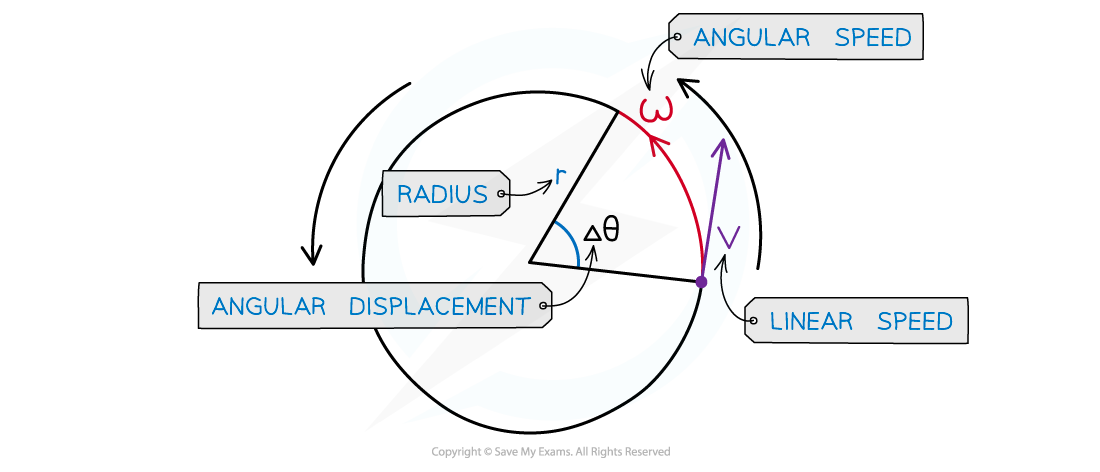Angular Velocity (OCR A Level Physics): Revision Note
Exam code: H556
Angular Velocity
Angular Displacement
In circular motion, it is more convenient to measure angular displacement in units of radians rather than units of degrees
Angular displacement is defined as:
The change in angle, in radians, of a body as it rotates around a circle
This can be summarised in equation form:

Where:
Δθ = angular displacement, or angle of rotation (radians)
S = length of the arc, or the distance travelled around the circle (m)
r = radius of the circle (m)
Note: both distances must be measured in the same units e.g. metres
Angular Speed
Any object travelling in a uniform circular motion at the same speed travels with a constantly changing velocity
This is because it is constantly changing direction, and is therefore accelerating
The angular speed (⍵) of a body in circular motion is defined as:
The rate of change in angular displacement with respect to time
Angular speed is a scalar quantity and is measured in rad s-1
It can be calculated using:

Where:
Δθ = change in angular displacement (radians)
Δt = time interval (s)

When an object is in uniform circular motion, velocity constantly changes direction, but the speed stays the same
Taking the angular displacement of a complete cycle as 2π, the angular speed ⍵ can be calculated using the equation:

Where:
v = linear speed (m s-1)
r = radius of orbit (m)
T = the time period (s)
f = frequency (Hz)
Angular velocity is the same as angular speed, but it is a vector quantity
This equation shows that:
The greater the rotation angle θ in a given amount of time, the greater the angular velocity ⍵
An object rotating further from the centre of the circle (larger r) moves with a smaller angular velocity (smaller ⍵)

Unlock more, it's free!
Did this page help you?